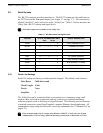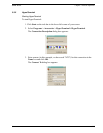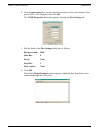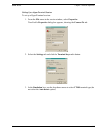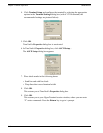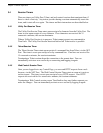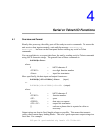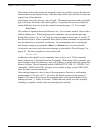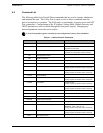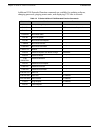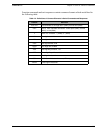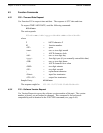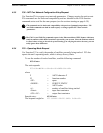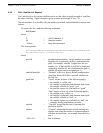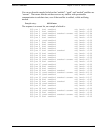
4-50 TimeVault™ User’s Manual 6000-100Ch4.fm Rev. D
Chapter 4: Serial or Telnet I/O Functions Overview and Format
The formats of the output strings are designed so that it is possible to request the state of a
function and save the response string. Later that string can be sent to the unit to restore the
original state of that function.
Input strings sent to the unit may vary in length. The manual represents what you should
type in the same fixed font, with a bold typeface. It represents the necessary keyboard
action differently, however, as per the manual conventions (page 1-1). For example:
F03<Enter>
The number of separators between fields may vary. You can enter numeric values with or
without leading zeros. When entering positive quantities, you can omit the plus sign.
String fields (such as “on” or “off”) may be entered in upper or lower case, as can the “F”
that starts all serial or Telnet commands. Some fields of some commands are optional and
may be replaced by a semicolon. In that case, the corresponding value is unchanged.
End all input strings by pressing the <Enter> or <Return> key on your keyboard.
An incorrect entry may result in an error message, as described in “Error Messages” on
page 5-87. The unit responds to correct entries with:
OK<CR><LF>
In addition to the regular F-series commands, there is also a set of F100 commands,
known collectively as Extended Function Commands. With certain F100 commands, you
can reconfigure network parameters, such as IP Address, or modify function settings like
Remote Lockout. These commands include F100 BASET, IP / SM / G / CONFIG (“set”
commands) / DHCP and LOCK. Changes to any of these settings, except F100 LOCK,
cause the unit to reset automatically.
After making changes to values in any of these parameters/functions, a confirmation
prompt appears (“Are you sure?”). For safety, the default response to this prompt is
negative. The unit will not execute the command unless you respond affirmatively by
entering the letter “y” within 10 seconds. Within that time period, any other response,
including no response, results in the unit canceling the command.



